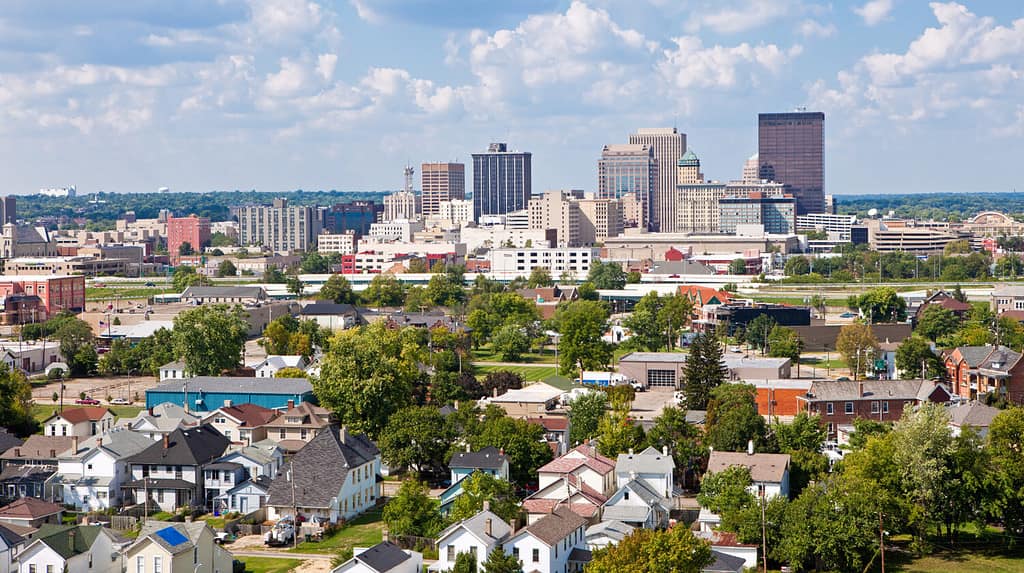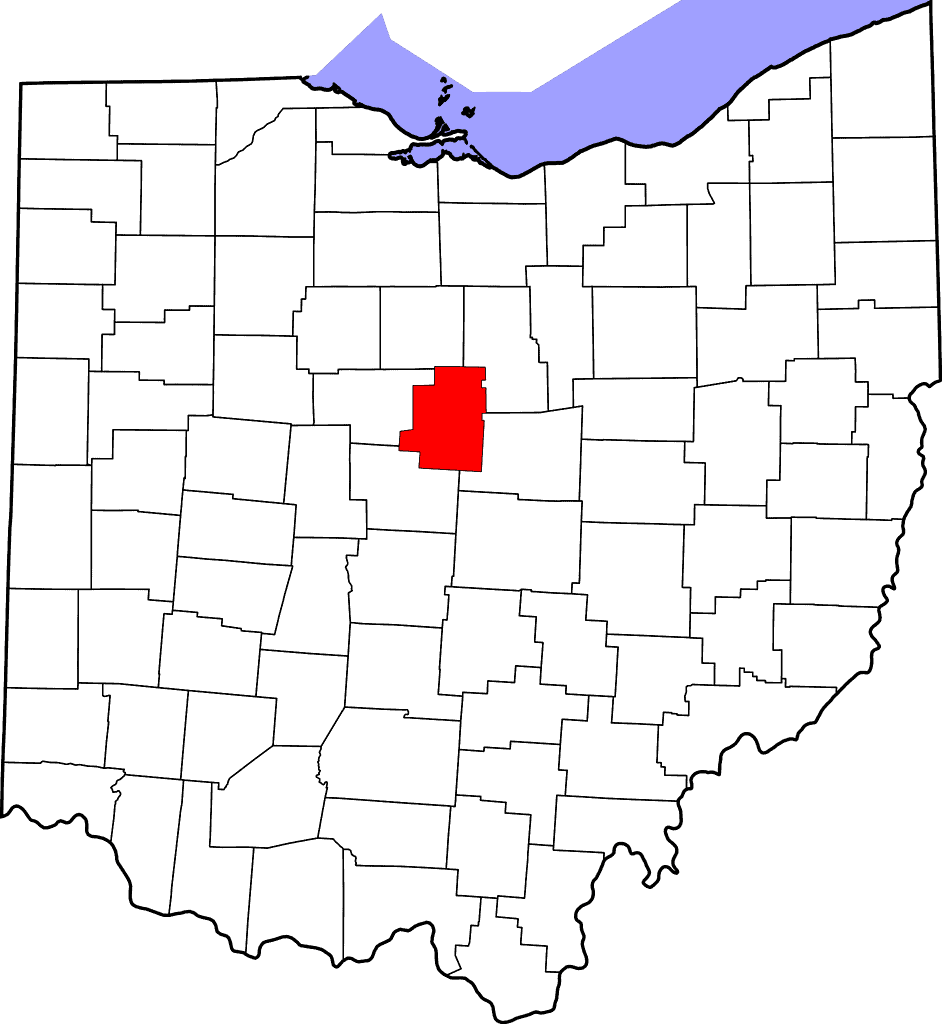Ohio is the seventh most populous state in the United States. There are six cities in the state with over 100,000 residents. One stands far above the others in terms of population, though. Here’s a look at the current and projected growth of Ohio’s capital and its largest city: Columbus.
The City of Columbus
The U.S. Census Bureau estimated the 2022 population of Columbus to be 907,971. The city has nearly as many residents as Ohio’s next three largest cities combined. Cleveland has an estimated population of 361,607. Cincinnati has 309,513 residents, and Toledo has a populace numbering 266,301.
Not only is Columbus easily the largest city in Ohio, but it is also outpacing the state’s other largest cities in growth rate. From 2000 to 2020, Columbus grew by more than 26.5%. Ohio’s other largest cities experienced very different trends. They all saw a decrease in population during that same twenty-year span.
Cleveland’s population decreased by nearly 22% from 2000 to 2020. Cincinnati’s population decreased by more than 6%, and Toledo’s decreased by more than 13% in those two decades.

Columbus is Ohio’s most populous city, and it’s not even close.
©Agnieszka Gaul/Shutterstock.com
Tale of Two States
This has created what the Greater Ohio Policy Center (GOPC) deems “A Tale of Two States.” The policy center’s report notes that Ohio has “one high-growth metro and city (Columbus), while much of the rest of the state exhibits the characteristics of legacy places.” A legacy place (or city) is built around a manufacturing sector or other industry that peaked years ago and is now stagnant or in decline. GOPC estimates that 64% of Ohioans live in a legacy city or surrounding metro area.
An aging population is also reflected in these legacy places. Columbus is the only major Ohio city that is seeing an increase in younger residents.
This is not to say that these legacy places are unimportant or that they will soon be eliminated. However, it does mean that local leaders will be forced to reckon with the changing economy and how they will attract new and growing economic sectors to their cities.
GOPC notes that Columbus and much of the rest of Ohio are on divergent trajectories. Ohio grew by 3% from 2000 to 2020. However, if you take Columbus and the surrounding metro area out of the calculation, the state’s population dropped by around 100,000 residents, or one percent of the total population, in those twenty years.
The Columbus metro accounts for 18% of Ohio’s total population. Columbus is experiencing such explosive growth that if the number of people who relocated to the metro area from 2000 to 2020 formed their own city, it would supplant Dayton as the sixth largest city in Ohio.

The number of people who moved into Columbus from 2000 to 2020 is larger than the population of Dayton, pictured here.
©Ami Parikh/Shutterstock.com
Population Projections for Columbus
Ohio’s capital city has clearly seen tremendous growth in the last two decades, and that trend shows no signs of stopping. The Columbus metro population is currently around 2.1 million. By 2050, that number is expected to balloon to 3.15 million.
The rest of the state is projected to move in the opposite direction, though. Ohio’s total population is projected to drop by 5.7% by 2050, assuming current migration, fertility, and mortality rates remain steady. Should that be the case, Georgia will likely become the seventh most populous state in the nation, dropping Ohio to number eight.

Central Ohio residents should expect to see many more suburban neighborhoods built in the coming years, such as this one near Columbus.
©Ross Ellet/Shutterstock.com
Demographic Center of Gravity
Columbus became the most populous city in Ohio in the early 1990s. The demographic center of gravity is an interesting way to measure population density and how it moves over time.
Imagine the state of Ohio laid out flat on a map. If every Ohioan shared the exact same weight, the demographic center of gravity measures the point where that flat map of the state would balance perfectly.
The demographic center of gravity has been creeping south, moving closer to Columbus for decades. Today, it lies in southern Morrow County. This illustrates how the state’s population is moving away from Cleveland and also away from rural areas in favor of Columbus.

Ohio’s demographic center of gravity now lies in southern Morrow County.
©David Benbennick / Public domain – License
Ohio’s Biggest Counties
Ohio has two counties with populations over one million: Franklin and Cuyahoga Counties.
Columbus is located in Franklin County, which is, not surprisingly, the largest and fastest-growing county in the state. Over 1.3 million people reside in the county, representing more than half of the total Columbus metro area population.
Cleveland is in Cuyahoga County, which has a population of 1.25 million. Cuyahoga County was the largest in the state until 2016, when Franklin County surpassed it.

Cleveland and its metro area in Cuyahoga County are expected to see a precipitous population decline by 2050.
©Sean Pavone/Shutterstock.com
Franklin County grew by 13.7% from 2010 to 2020, while Cuyahoga County dropped by 1.2% in the same time period. The population decline in Cuyahoga County is speeding up. The percentage of loss is expected to be far greater by the next census in 2030.
According to the Mid-Ohio Regional Planning Commission (MORPC), Franklin County is expected to see population growth of 26% by 2050. Other counties in the Columbus metro are expected to grow even more relative to their current population size. Madison County, which borders Franklin County to the west, is projected to grow by 30%, as is Licking County, which borders Franklin County to the east. The biggest growth relative to the current population is expected to be in Delaware County, Franklin County’s neighbor to the north. Delaware County has a current population estimate of 226,296, but the county is expected to grow by a staggering 80% by 2050.
The Footprint of Columbus
As Columbus experiences growth that is far outpacing other Ohio cities, it must be noted that some of this population rise is due to the city’s extraordinarily large footprint. In terms of land area, the city of Columbus is nearly the size of the next three largest cities combined. Why is Columbus so disproportionately large compared to cities such as Cleveland, Cincinnati, and others? There are multiple reasons, but a former Columbus mayor is credited for much of the spread of Columbus’ city limits.
Jim Rhodes served as Ohio’s governor from 1963 to 1971 and again from 1975 to 1983. Before he was elected as governor, though, Rhodes served as mayor of Columbus from 1943 until 1951. During his mayorship, Rhodes greatly expanded the size of the city using what came to be known as “water gun diplomacy.”

Jim Rhodes sparked some of the growth that Columbus is now experiencing today during his time as mayor in the 1940s.
©Fremont News Messenger / Public domain – License
Water Gun Diplomacy
Neighboring cities were growing and in need of additional infrastructure, namely water access. Columbus had sole control of the municipal water supply, which Rhodes used to the city’s advantage. He told these nearby municipalities that they could only tap into his city’s water system if Columbus annexed them. Since these localities had no other real options to provide water to their citizens, they submitted to Rhodes’ proposal, and the land area of Columbus grew dramatically.
Rhodes also had a geographical advantage that leaders in cities such as Cleveland and Cincinnati do not have. Lake Erie borders Cleveland to the north, while Cincinnati is hemmed in by the Ohio River to the south. If city leaders wanted to expand their boundaries, these watery blockades would limit their options. With Columbus’ location in the center of the state, Rhodes did not face such limitations.
The photo featured at the top of this post is © Sean Pavone/Shutterstock.com
Thank you for reading! Have some feedback for us? Contact the AZ Animals editorial team.






